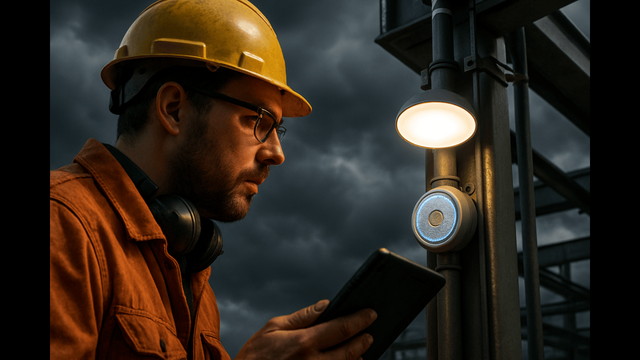If you manage or operate an industrial facility, you probably already have fire safety covered, equipment maintenance on schedule, and security systems in place. But what about lightning?
We’ve worked with factories, warehouses, refineries, and data centers across India—and it’s surprising how often lightning risk management gets overlooked. Many assume it’s just about installing a lightning rod. But in our experience, that’s just one part of the picture.
When lightning hits, it can cause downtime, damage electrical systems, and in some cases, even threaten lives. Here’s how we help our clients build a reliable, long-term lightning protection strategy that actually fits their operations.
Start with a Risk Assessment That Makes Sense for Your Facility
Every plan starts with understanding the risk. IEC 62305 is the standard we follow. It helps us evaluate how likely a facility is to be struck by lightning, and what the consequences would be if it happens.
For example, we recently worked with a plant in Gujarat. They thought their structure was strong enough to handle lightning on its own. But after running the numbers, we found major gaps—especially in the way their electrical systems were exposed.
Risk assessment isn’t just a box to tick. It helps you decide what level of protection your facility really needs, based on data—not guesses.
External Protection: More Than Just a Rod on the Roof
A lightning rod by itself won’t protect a facility. What you need is a complete external lightning protection system. That includes:
- Air terminals to attract the strike
- Down conductors to carry the current safely
- A grounding system to send it into the earth without causing damage
We saw this work well for a logistics center in Bengaluru. After proper design and installation, they made it through monsoon season without a single lightning-related issue. Before that, they dealt with frequent disruptions every year.
The key is in the details. Height of the structure, shape of the roof, and site conditions all affect how the system should be designed.
Don’t Forget Internal Protection: Surges Can Be Just as Harmful
Not all lightning strikes are direct. In fact, many problems come from indirect surges—voltage spikes that travel through power or data lines. These can damage control panels, machines, and sensitive equipment even if the building itself isn’t hit.
A textile plant we worked with had this issue. No direct strikes, but their sensors kept failing after thunderstorms. We installed the right Surge Protection Devices (SPDs), and that stopped the issue completely.
SPDs should be installed at all key points—main panels, control systems, data connections. Think of them as circuit bodyguards. They don’t stop lightning, but they prevent it from damaging your systems.
Grounding Systems: Connect Everything, Test Regularly
A protection system is only as good as its grounding. That’s one area where many sites fall short. Wires corrode, connections come loose, or the system was never designed to handle modern loads.
One steel plant we supported had added new machinery over the years but never updated its grounding. When we tested it, the resistance was far too high. After redesigning the layout and bonding all metallic systems into a single grid, their protection system finally performed the way it should.
Routine testing—at least once a year—is essential. If the grounding isn’t working, the rest of the system won’t help much.
Maintain What You Install
You’d be surprised how many facilities have solid systems on paper, but they fail when it matters most. Why? Lack of maintenance.
We always recommend visual checks every six months, and full inspections once a year. That includes checking conductors, testing grounding resistance, and verifying SPD status.
A food processing facility we worked with had excellent SPDs installed, but they were five years old and never inspected. After one storm, half had failed silently. Replacing them restored full protection—and helped avoid future equipment failures.
Train Your Team to Respond
Even with the right technology, your staff needs to know how to respond during a lightning event. That includes:
- Knowing which systems to shut down
- Understanding surge warnings or SPD indicators
- Reporting issues after a storm
Some of our clients include lightning procedures in their regular safety training. It’s a simple step, but it creates awareness and accountability—especially during peak storm seasons.
Keep Good Records
We always provide clients with detailed documentation—risk reports, diagrams, product specs, inspection logs. Not just for compliance or insurance, but to help them track upgrades, audits, and system health over time.
One pharma client used their lightning protection documentation to successfully reduce their insurance premium. When you can show proof of risk reduction, you don’t just get safety—you get business benefits, too.
Final Thoughts
Lightning risk management doesn’t have to be complicated, but it does need a structured, realistic approach. We’ve seen what works and what doesn’t, across dozens of industrial setups.
The right solution isn’t just about equipment—it’s about planning, people, and follow-through. If you haven’t reviewed your lightning protection strategy in a while, or if your facility has grown or changed, it may be time for a fresh look.
If you’d like help with a risk assessment or want to make sure your current system is up to standard, we’re happy to step in. We’ve helped teams across industries build safer, smarter systems—and we’re always ready to bring that experience to the next facility that needs it.
